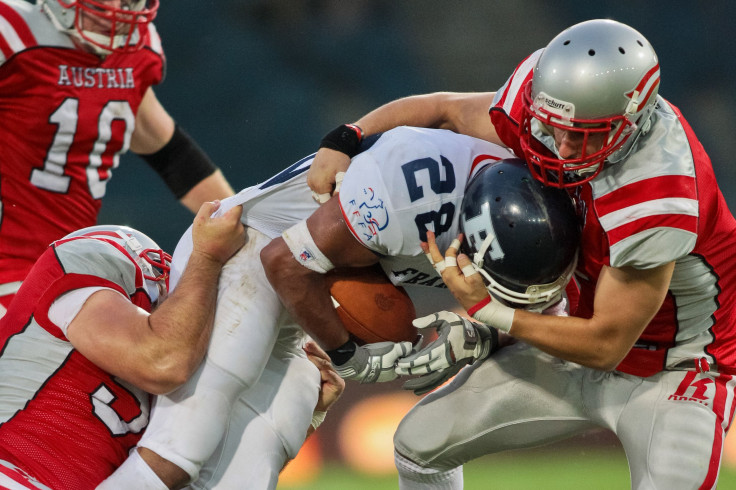Most Football Concussions Happen At Practice

(Reuters Health) - High school and college football players suffer more concussions during practices than during games, according to a new study.
This is simply because there are more practices than games, said lead author Thomas P. Dompier of the Datalys Center for Sports Injury Research and Prevention in Indianapolis, Indiana.
When the number of concussions is divided by the number of field appearances, the concussion rate is actually higher during games, he said.
Dompier and colleagues used reports from three large surveillance systems in the U.S. to study concussions in 118 youth football teams, 96 high school programs and 24 college institutions in the 2012 and 2013 seasons.
In total, more than 1,000 concussions were reported. About 66 percent were in high school students.
For youth players age five to 14, almost 54 percent of concussions happened during games, compared to about 42 percent of high school and college concussions, the researchers reported in JAMA Pediatrics.
The rate was highest in college, with almost four concussions per 1,000 participations in a game, compared to 2.4 for youth players and about two for high-schoolers.
The average athlete needs up to two weeks to stop having symptoms like headaches and memory problems, but kids who have had multiple concussions may need longer to recover, with memory and attention problems sometimes lasting a year.
When coaches and football parents are educated about proper tackling technique, equipment fitting, recognize the signs and symptoms of concussion, heat injury, sudden athlete death, and other injuries, practices can be safer, Dompier said.
“From my experience working as an athletic trainer, college coaches rarely schedule full-contact drills during practice focusing more on strategy and tactics,” he said. “At the youth and high school levels, coaches still teach tackling, and in my opinion, most still mistakenly believe the only way they can teach tackling is through player-to-player contact.”
Most youth coaches are volunteers, he noted, but there are practical solutions, like the USA Football’s Heads Up Football coaching certification program.
“The majority are occurring in practices, so we need to figure out what we can do to try to prevent those,” said Dr. Frederick P. Rivara of the University of Washington in Seattle who was not part of the new study.
“They could have more non-collision practices,” Rivara, the editor of JAMA Pediatrics, told Reuters Health by phone.
Policies can also limit how much time is devoted to full or player-to-player contact, eliminating specific drills that create injurious situations such as the Oklahoma Drill, Dompier said.
“A few examples include Pop Warner’s recent improvements to their practice policies, USA Football’s Youth Football Practice Guidelines, and the NFHS also recently released practice guidelines for high school football,” Dompier said. “Minimally, organizations should at least follow those guidelines that are appropriate for their level of play.”
Governing bodies, organization officials, coaches, and parents are starting to take the issue of concussion and other injuries seriously and are taking steps to make not only football, but all sports safer, he said.
“People are more aware that concussions are occurring,” Rivara said. “Secondly they are aware that while the majority get better within two weeks, some do not.”
In Canada, he noted, a rules change increased the age at which body-checking could start, and concussion rates in younger kids went down.
“We’re not suggesting football should stop being played, but we are concerned,” he said.
SOURCE: http://bit.ly/1zsw8kC JAMA Pediatrics, online May 4, 2015.
(By Kathryn Doyle)



























